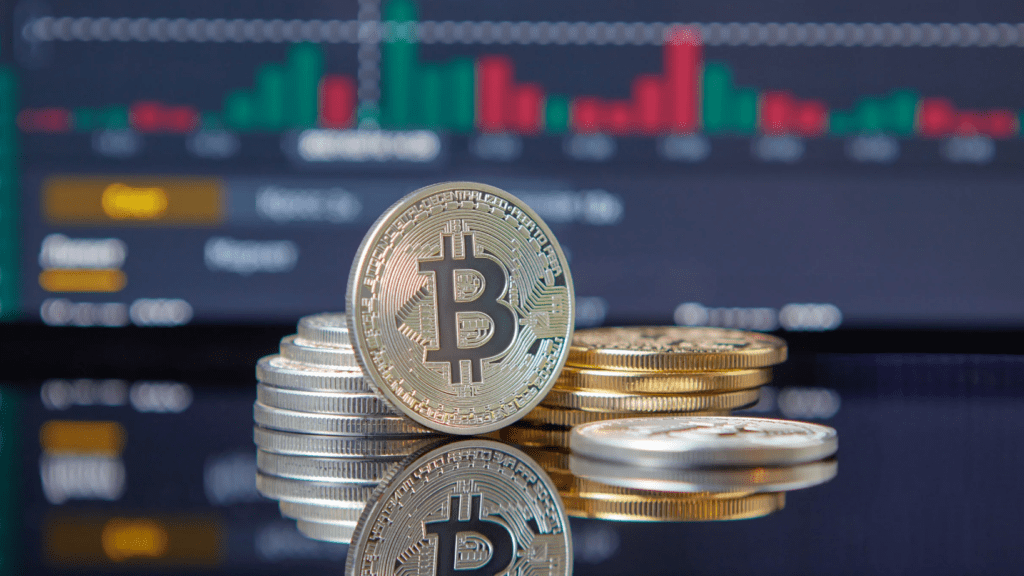
What is Bitcoin?
Bitcoin is like digital money that isn’t controlled by any government or company. It works on a technology called blockchain, which is like a digital ledger powered by many computers around the world.
This makes Bitcoin transactions secure and transparent. It started in 2009, but we don’t know who created it. You can use Bitcoin to buy things online, and some people see it as a digital version of gold – a way to store value.
Bitcoin transactions are like digital puzzles that get solved by computer networks using special codes, and these transactions are added to a public online record called the blockchain. No big authority, like a bank, controls it, so it’s harder to control or stop.
People get Bitcoin by either using powerful computers to solve these puzzles (mining) or by buying it on special websites using regular money. There’s a limit to how much Bitcoin can exist – only 21 million – which makes some people think it’s valuable, like a rare item.
But, be careful because the value of Bitcoin can change a lot, and some people argue about how it fits into our money system.
History of Bitcoin
Bitcoin started in 2009 when someone named Satoshi Nakamoto, came up with the idea. They wrote a document explaining how it would work, and on January 3, 2009, they mined the first block of the Bitcoin system. This was like the beginning of a digital ledger called the blockchain.
Originally, Bitcoin was supposed to be a way for people to send money directly to each other without using banks. As time passed, more and more people got interested, and Bitcoin became not just a way to buy things but also a kind of digital treasure, like online gold. Even today, we still don’t know who Satoshi Nakamoto really is, keeping it a bit mysterious.
What Is Digital Gold & How Can You Buy IT in 2024
How to Mine a Bitcoin
Mining Bitcoin involves using powerful computers to solve complex mathematical problems that validate transactions on the Bitcoin network. Here’s a simplified explanation of how to mine Bitcoin:
Get the Right Hardware:
In the early days, people could mine Bitcoin with regular computers. However, as the network became more competitive, specialized hardware known as ASIC (Application-Specific Integrated Circuit) miners became essential.
Choose Mining Software:
Select mining software compatible with your hardware. Popular options include CGMiner, BFGMiner, and EasyMiner.
Join a Mining Pool:
Mining on your own (solo mining) is extremely difficult now due to the high level of competition. Joining a mining pool allows you to combine your computing power with other miners, increasing the chances of solving blocks and earning rewards. Popular mining pools include Slush Pool, F2Pool, and Antpool.
Create a Bitcoin Wallet:
You need a Bitcoin wallet to receive the rewards you earn. Choose a wallet that suits your preferences, whether it’s a hardware wallet, software wallet, or an online wallet.
Configure Mining Settings:
Set up your mining software by entering the details of your mining pool account and your Bitcoin wallet address.
Start Mining:
Launch your mining software, and it will connect to the mining pool. Your computer will start solving mathematical problems to verify transactions, and if your pool successfully solves a block, the rewards are distributed among participants based on their contributed computing power.
Payment
Get a Bitcoin Wallet:
Choose a Bitcoin wallet that suits your needs. Wallets come in various forms, including mobile apps, desktop software, web wallets, and hardware wallets.
Get a Receiving Address:
In your Bitcoin wallet, find the option to receive funds. This will generate a receiving address – a long string of characters unique to your wallet. This is what you share with others to receive Bitcoin.
Share the Receiving Address:
Provide the person or entity you’re dealing with your Bitcoin receiving address. This could be a QR code (a scannable square of dots and lines) or the actual alphanumeric address.
Send Bitcoin:
If you’re the one sending Bitcoin, you’ll need the recipient’s Bitcoin address. In your wallet, look for the “send” or “transfer” option, enter the recipient’s Bitcoin address, specify the amount, and confirm the transaction.
Transaction Confirmation:
Bitcoin transactions are added to the blockchain through a process called mining. This process takes time, and you might need to wait for a certain number of confirmations (usually six) for the transaction to be considered secure.
How Long Does It Take to Mine One Bitcoin?
On average, it takes around 10 minutes for the network of computers involved in Bitcoin mining to confirm a set of transactions and get a reward. Miners receive 6.25 Bitcoins for each confirmed set of transactions, known as a “block.” So, to put it simply, it takes about 96 seconds to mine one Bitcoin.
